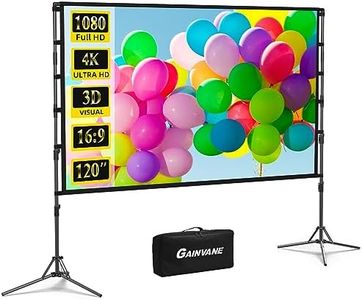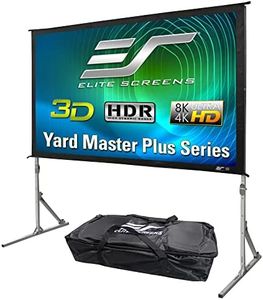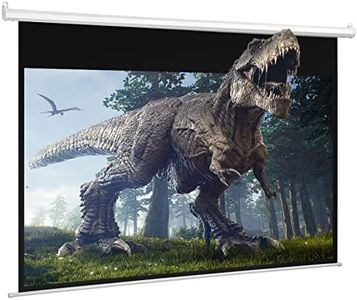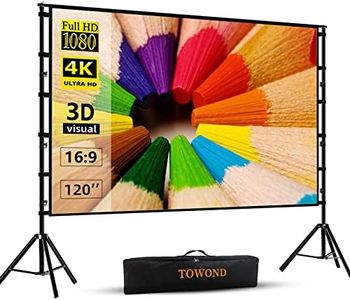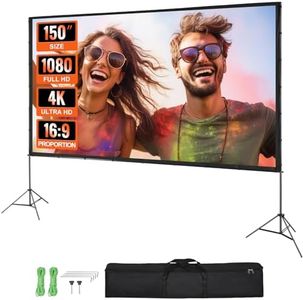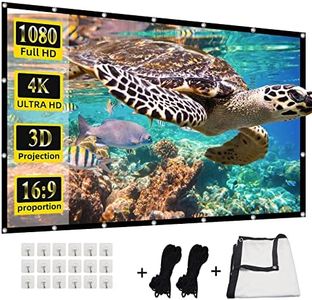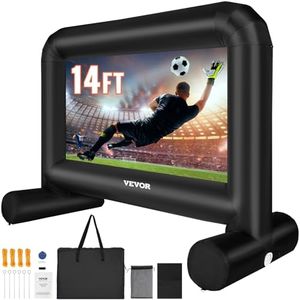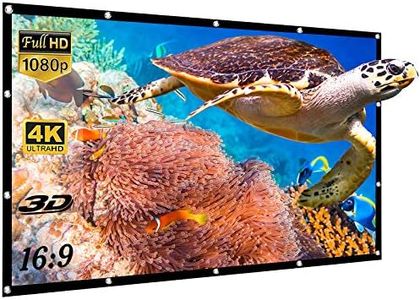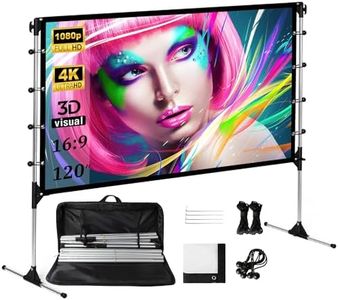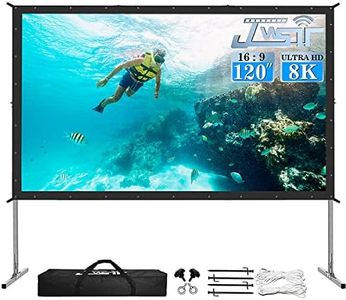We Use CookiesWe use cookies to enhance the security, performance,
functionality and for analytical and promotional activities. By continuing to browse this site you
are agreeing to our privacy policy
10 Best Outdoor Projector Screen
From leading brands and best sellers available on the web.Buying Guide for the Best Outdoor Projector Screen
Choosing the right outdoor projector screen can make a big difference in how enjoyable your movie nights or presentations will be. The ideal screen helps you get the best image quality from your projector, is easy to set up outside, and can withstand different weather conditions. To find the best fit for your needs, think about where you’ll use the screen, how many people will be watching, and how much effort you want to put into setup and storage.Screen SizeScreen size refers to the diagonal measurement of the screen, usually in inches. It’s important because it determines how big the picture will be, affecting how many people can comfortably watch and how immersive your experience is. Smaller screens (under 80 inches) are portable and fit small gatherings or limited spaces. Medium screens (80–120 inches) work well for most backyards or average group sizes. Large screens (over 120 inches) are best for large groups or big open areas, but may be harder to transport and set up. Choose a size that suits your space and the expected audience size; bigger isn’t always better if your projector can’t fill the screen with a bright, clear image.
Screen MaterialThe material of a projector screen affects how images look, including brightness, color, and clarity. Outdoor screens are usually made of fabrics like PVC, polyester, or special outdoor-rated materials that resist mildew and weather. Some are designed to reflect more light for brighter images, while others prioritize viewing angles so the picture looks good from the sides. If you want vivid images even before sunset, pick a screen labeled as high gain (more reflective). For wider viewing so everyone sees clearly, choose a screen with a standard or lower gain. Consider your projector’s brightness and outdoor light conditions to pick the material that matches your setup.
Screen Type (Fixed, Inflatable, Foldable)Outdoor screens come in various types, including fixed frame, inflatable, and foldable designs. Fixed frames give the flattest, most professional image but need more time and space for setup and storage. Inflatable screens are fast to set up and take down and are popular for large events, but require a blower that makes some noise. Foldable or portable screens are lightweight and easy to move, making them great for casual events or travel, though they might not stay perfectly flat. Your choice depends on how often you’ll move the screen, how much time you want to spend setting it up, and how important picture flatness is for your experience.
Aspect RatioAspect ratio is the shape of the screen, such as 16:9 (widescreen), 4:3 (classic TV), or even 2.35:1 (cinematic). This is important because it should match the kind of content you watch most and your projector’s native ratio. 16:9 is the most common for movies and TV, fitting most modern content. 4:3 works better for older shows or slideshows. Choosing the wrong ratio could mean blank spaces above and below (letterboxing) or on the sides (pillarboxing) of the picture. Before choosing, check your projector’s native output and your typical content.
Setup and PortabilityThis refers to how easy it is to put up, take down, and move your projector screen. Portability determines whether you can carry the screen to different locations easily, while setup indicates how long and complicated it is to get a usable picture. Some screens include carrying bags, fold into compact packages, or have snap-together frames. Others need inflation or staking into the ground. If you’ll be moving locations often or don’t want a long setup process, look for a lightweight screen with simple assembly and clear instructions.
Weather ResistanceSince outdoor projector screens are exposed to the elements, weather resistance is important for longevity and safety. Some screens are made from weatherproof materials that resist water, UV rays, and mildew. Others may not handle wind or rain well and should only be used in dry conditions. If you plan to leave the screen up overnight or use it in less predictable weather, prioritize screens that are labeled as waterproof or outdoor-rated, and check for sturdy frames or secure anchoring features.

